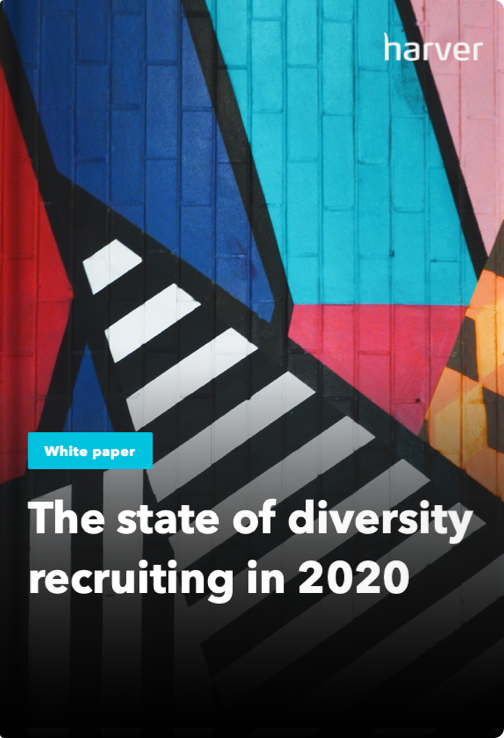A diverse team makes a better team. You get a variety of perspectives, you get increased creativity, you get an uplift in productivity, you get improved performance, and that’s just the team.
For the organization, a diverse workforce results in growth, a boost to your reputation, and a global impact. Having a diverse team is simply better all around. But to get a diverse workforce you first have to start with building a diverse candidate pool.
However, according to talent professionals, finding diverse candidates to interview is the #1 barrier to improving workplace diversity. To be able to interview such candidates, you need to start by attracting them to apply for your roles in the first place.
So how do you do this? Here are our 7 tips for building a diverse candidate pool.
What’s in?
- Understand the broadness of diversity and intersectionality
- Review your job postings
- Promote inclusive benefits and perks
- Go beyond your main recruiting channels
- Support internal mobility
- Build and maintain an inclusive employer brand
- Work on your DEI statement
Like what you see?
Don’t miss out. Subscribe to our quarterly digest to get the latest TA and TM resources delivered right to your inbox.
1. Understand the broadness of diversity and intersectionality
Diversity doesn’t start and stop with gender and race, which are usually the most discussed categories within the recruitment and HR space. There are many types of diversity and if you want to build a truly diverse candidate pool, you need to think beyond the obvious categories.
Broaden your search terms and think age, disability, neurodiversity, veteran status, for starters. And don’t forget that these categories themselves aren’t stand-alone; different types of diversity also intersect, e.g. experiences of white women and black women within an organization might be different even though they are the same gender.
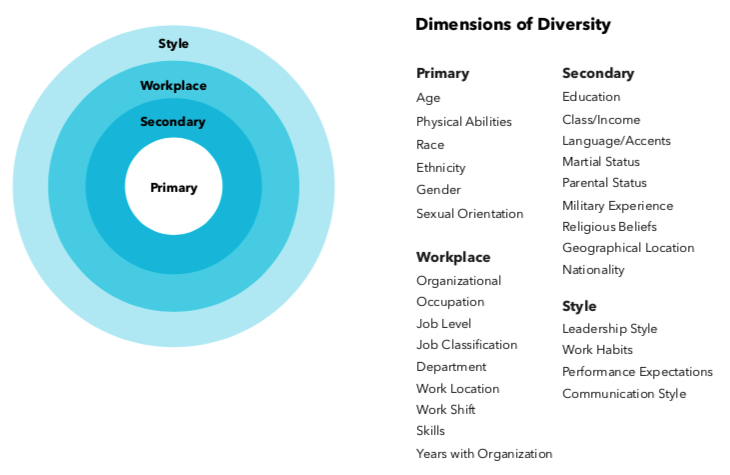
Diversity cannot be simplified to primary categories only. Consider other directions of diversity when preparing your recruiting strategy.
2. Review your job postings
If you want to build a diverse candidate pool you need to make sure that you’re giving a great first impression to potential candidates, so review your job postings.
Check the language you’re using and ensure that it’s inclusive. For example, make sure you refer to the applicants as ‘you’ instead of their gender or ‘he/she’. By keeping the language inclusive and neutral, you aren’t unintentionally turning candidates off from applying for the role.
For instance, if you’re wondering why no women are applying to your engineering jobs, take another look at your job postings. You just might not be finding them because of the language you use in your advert. You want candidates to be able to see themselves in the role, and keeping the description neutral will enable that.
If you’re struggling with writing a job description using neutral language, use a tool that can help you such as Gender Decoder, Textio, or Applied.
Remove the focus from your education requirements (unless they’re essential for the job itself). Not every great candidate will have been able to afford to go to an Ivy League school, and not every candidate who went to a great school will be your ideal candidate.
Instead, focus on the tasks of the role rather than create a long list of requirements. Including unnecessary requirements on the job posting will only result in putting potential diverse applicants off. If you do want to include requirements, make sure they are just that, and not habits from the way you previously recruited.
When you focus on unnecessary requirements, you’re drawing your attention away from the things that actually matter, potentially sifting out qualified diverse candidates – don’t forget how valuable soft skills are. Hard skills can always be taught.
Teaching someone how to play well with others, how to communicate efficiently, how to be on time, how to be empathetic is much much harder. So highlight these desirable, transferable skills and state on the job advert that you’re open to candidates with these.
For more inspiration, read our article on inclusive job descriptions and download a one-pager with the practical tips here.
3. Promote inclusive benefits and perks
In order to build a diverse candidate pool, you need to attract candidates from diverse backgrounds in the first place. The key thing to remember here is that different groups of candidates might prefer different employee benefits, and simply offering work from home privileges and a company laptop won’t cut it anymore.
Put yourself in your candidates’ shoes: in this day and age, what perks would attract you to the job? For example:
- Women may consider certain benefits more attractive than men.
- Someone with a young family might be keen on health insurance and parental leave.
- You could take that one step further and offer disability insurance.
- In the current uncertain situation caused by the global COVID-19 pandemic, paid sick leave and family and medical leave are becoming even more important.
- For older workers, retirement benefits might be attractive.
- Your foosball table and Friday drinks might not interest a person who is a primary caregiver, instead, think about what contribution to childcare costs you could make
- Can you support wellness programs – healthy employees are better employees after all.
- Could you guarantee employee training for those just starting out in their careers or encourage continuous education among your staff – a great way to retain talented staff is to provide them with the resources to let them grow.
What would you want as a vet? As a carer? As a parent? Ask different employees what benefits they (would) appreciate the most and research what your competitors offer their employees to get an idea of how you can support your workers.
Make sure that you’re promoting your inclusive benefits and perks in your job postings, career sites, and other communications. Even if they’re small perks that require little or no budget (not everyone has deep pockets like Google or Twitter), every little thing will help you attract candidates from diverse backgrounds you’re after.
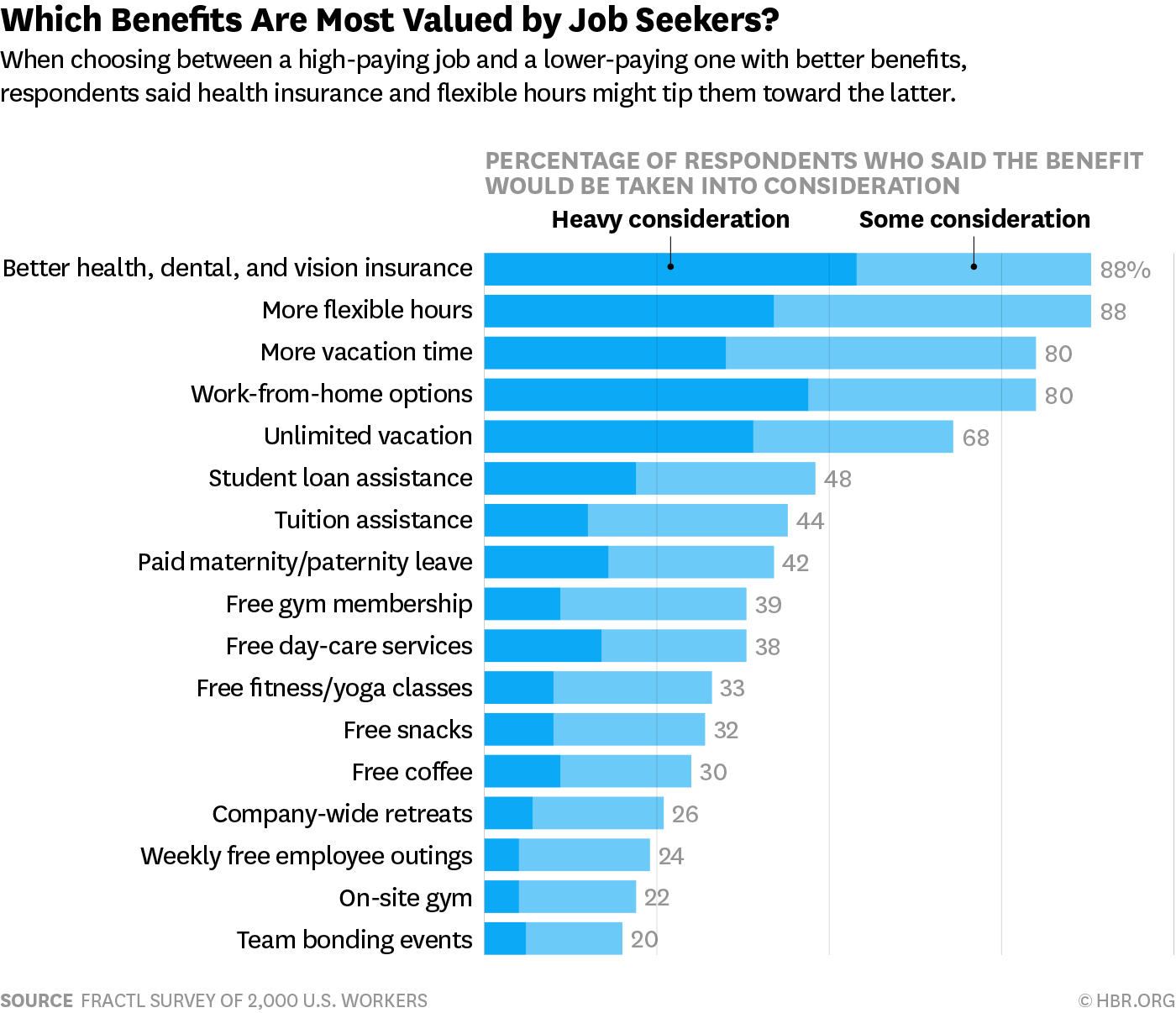
Inclusive benefits are an invaluable tool for attracting and retaining candidates from different backgrounds. (Image source)
4. Go beyond your main recruiting channels
To attract candidates from underrepresented groups and build your candidate pool, instead of simply posting your job ads on the large job boards and sites such as Linkedin and Indeed, consider using other, smaller, more niche channels to recruit in.
- Find niche job boards, for example, where your target candidates are likely to be looking.
- Work together with professional organizations for people from underrepresented groups.
- Collaborate with HBUs.
- Encourage people to refer others who don’t look like them like Frame.io does. During your onboarding process, include a section whereby you ask new employees to think of someone they know who would be a great fit for working at your organization, then tell them to dismiss that person from their mind and think of someone who doesn’t immediately spring to mind, who doesn’t look like them, but who would potentially make a great fit, and refer them instead.
If you want to attract diversity, you have to go out and get people, don’t expect them to come to you. Be proactive in your diversity recruiting efforts.
The state of diversity recruiting in 2020
5. Support internal mobility
Hiring candidates from diverse backgrounds doesn’t mean you have to look outside of your organization. If you’ve previously invested time and money in recruiting such candidates and in their training and education – for example, if you run an internship or a traineeship program – see what you can offer to the alumni.
Instead of always looking to hire in, consider actively promoting your vacancies internally. If you have someone in your organization already, who knows you, who has experience in a different department, just think what value they could add if they move to a different team, not to mention the cost benefit to you:
- It will reduce your time to hire
- It will drastically reduce your onboarding times
- It will reduce your cost per hire
- It will strengthen your employee engagement
- You already know the employee – there won’t be (shouldn’t be) any negative surprises
Build a culture of internal mobility within your organization and benefit from the investment you’ve already made in diversity recruiting strategy.
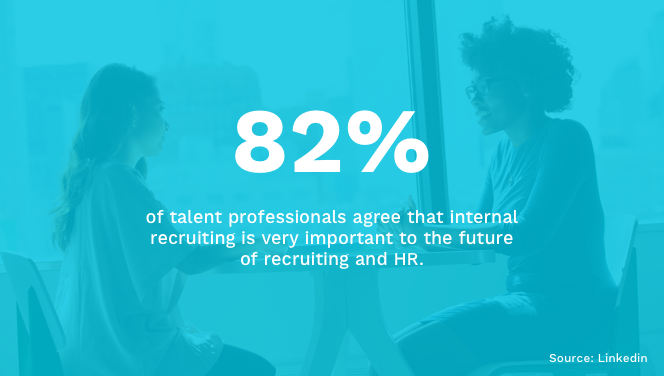
To enable effective internal recruiting and internal mobility, you should chart career paths with your employees and focus on their development through training and mentorship.
6. Build and maintain an inclusive employer brand
Take a long hard look at your employer branding. Does it showcase your commitment to diversity? Make sure that what you’re doing is authentic and that you aren’t simply posting stock photos of diverse people. If you aren’t being genuine, people will immediately see through your efforts and you risk damaging your reputation.
Candidates want to be able to see themselves in your current employees – like attracts like, and if you have a workforce made up mainly of white men, that can be incredibly daunting to anyone who isn’t one.
Recognize the mistakes you’ve made in hiring previously, acknowledge that you didn’t put as much effort into hiring people from diverse backgrounds as you should have, and show commitment to moving forward. Being humble and accepting responsibility for your part in not building a diverse candidate pool sooner will go a long way to building bridges with the people you want to connect with now.
One way you might show your growth is by sharing your diversity data, highlight your progress to date, shout about your commitment to diversity, the perks you offer, and how you support the development of your employees.
7. Work on your DEI statement
Diversity was once a box that needed to be checked. Now it’s directly tied to your company branding, your reputation, your culture, and your future. If you want to grow, you need to realize that a diverse workforce will enable that.
Don’t just do it to tick a box. Companies that don’t adapt their recruiting to prioritize diversity will see their talent pool shrink considerably – Gen Z whose members are entering the workforce right now is more racially and ethnically diverse than previous generations.
When you write your DEI statement, make sure that it reflects your strategies. Make it easily readable, it doesn’t need to be a lengthy document, short and pithy is all you require – 20-75 words will suffice. Be sure to tie your company mission and values into it.
Great examples of DEI statements include:
T-Mobile – ‘Uniqueness is powerful. Be yourself. We like it that way. Diversity fuels the Un-carrier spirit. Our commitment to inclusion across race, gender, age, religion, identity, and experience drives us forward every day.’
GoDaddy – ‘Bring your true self. We’ll help you shine. At GoDaddy, we empower our community to do ground-breaking work, develop their skills and advance their careers in a culture of creativity.’
Google – ‘Build for everyone. Google is committed to continuing to make diversity, equity, and inclusion part of everything we do – from how we build our products to how we build our workforce.’
Hubspot – ‘You are welcome. We’re building a company future generations can be proud of. A company where everyone is welcome. A company where you can be yourself. Come build it with us.’
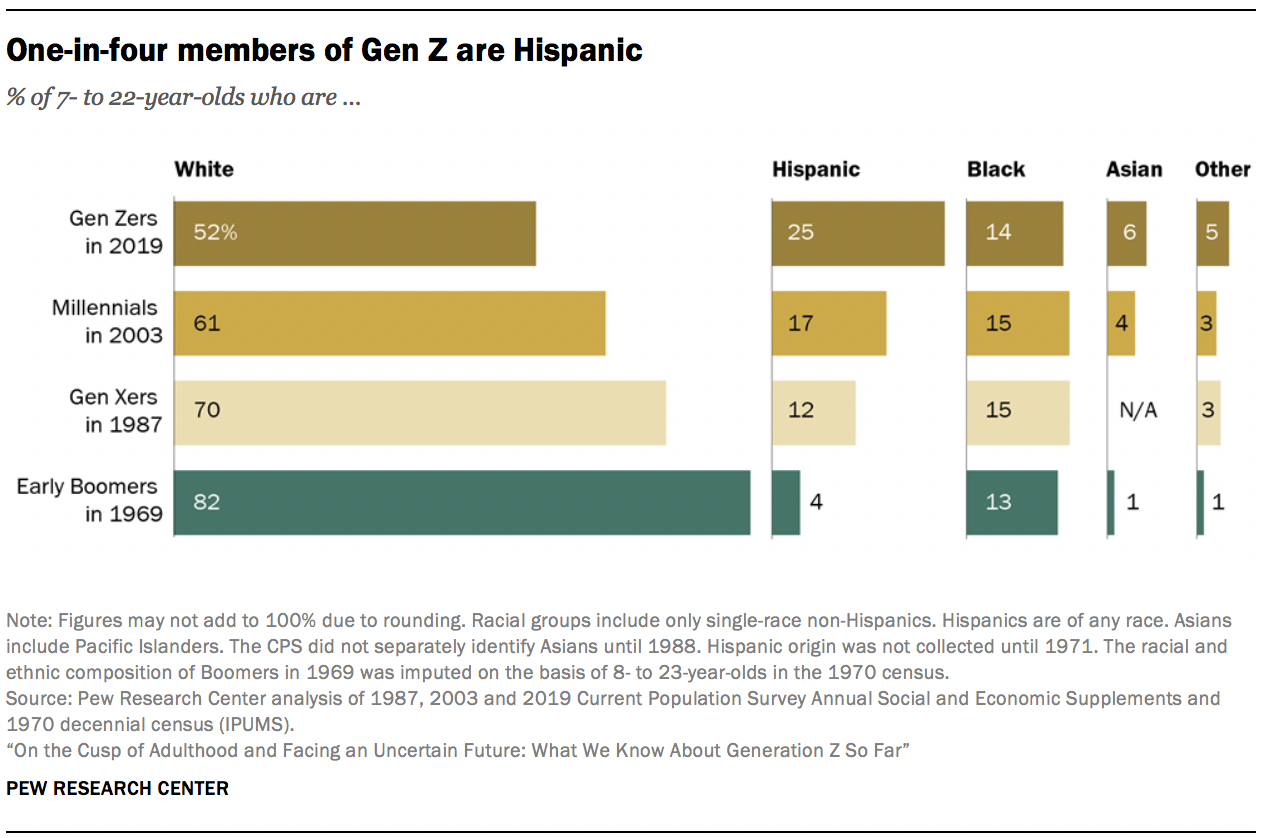
If you want to attract employees as diverse as members of Generation Z, your commitment to diversity, equity, and inclusion needs to permeate through all your communication.
Over to you
Attracting a diverse candidate pool to your job openings will allow you to build a diverse shortlist, interview, and eventually hire more diverse candidates. The key is to be proactive and not use the excuse of “there are no diverse candidates to interview”.
Instead, scrutinize how you attract candidates and where you look for them. The world’s a big place, you just have to cast your net wider, open your parameters, and don’t let your past recruiting practices dictate how you recruit now and into the future.
The state of diversity recruiting in 2020

